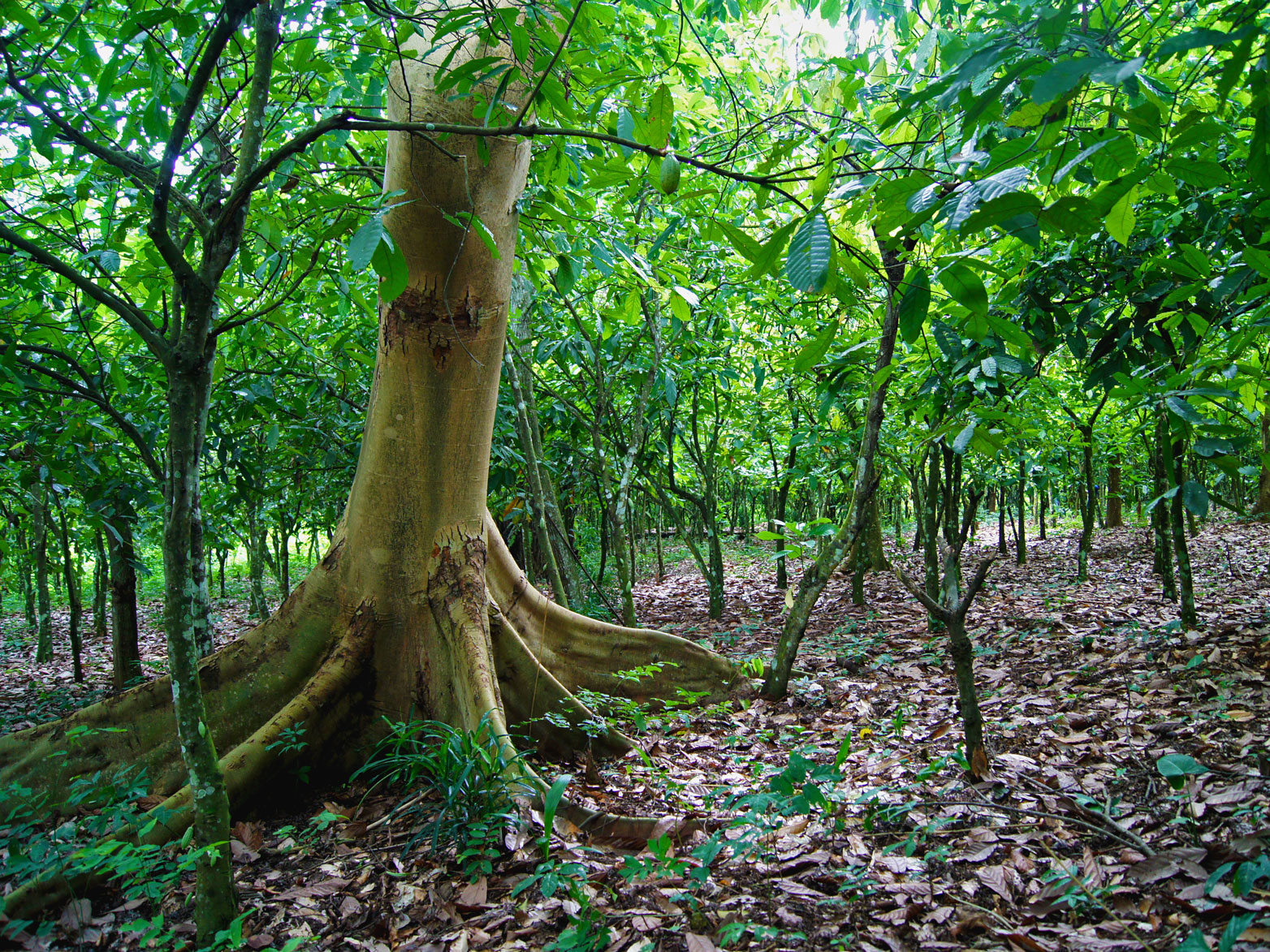Shade-Tree Cover and Carbon Stock Assessment for Cocoa Agroforests
Agroforestry – the deliberate inclusion of shade trees in cropping systems – can increase the sustainability of cocoa production by supporting high levels of biodiversity, buffering cocoa from contemporary climate changes, offsetting future climate change through carbon sequestration, and by encouraging agricultural intensification without deforestation. Because of these advantages, and in response to supply-chain and reputational risks, chocolate producing companies are increasingly engaging in efforts to implement cocoa agroforestry in major producing countries.
In this project we will develop methods to rapidly assess shade-tree cover and carbon stocks in existing cocoa farms, across large scales, and repeatedly over time. Our aim is to develop an easy-to-use, cost-effective tool to measure changes in shade-tree cover in cocoa farms, and to monitor progress towards implementing agroforestry commitments. We will come up with spatially-explicit recommendations for optimal levels of shade-tree cover accounting for locally-varying growing conditions across Ghana and the Ivory Coast; and determine the carbon-sequestration potential of cocoa agroforestry.
To meet these goals, we will develop a method to assess shade-tree cover and carbon stocks in cocoa farms using powerful deep machine learning techniques on remote-sensed, satellite images. Moreover, we will combine industry estimates of yield across thousands of cocoa farms, local climatic and edaphic variables from existing GIS map layers, and estimates of shade-tree cover using our newly developed methods, to identify optimal levels of shade-tree cover for different growing regions across Ghana and the Ivory Coast.

Project partners:
University of Queensland, Lindt Cocoa Foundation
Contacts:
Alexander Becker, ETH Zürich,
Wilma Hart, University of Queensland,
Jan Dirk Wegner, ETH Zurich,
